A couple of months after the Game Developers Conference, we unveiled the name of our new system. We wanted a name that could be said in any language— further testimony to our goal of expanding gaming to as many consumers as possible. Wii was announced. Pronounced “we,” the name was a concerted effort to highlight the inclusive nature of our approach. We anticipated that some would make jokes based on this name (Wii, wee-wee). But the distinctive term combined with its inclusiveness made the naming decision worth it. The large Electronic Entertainment Expo (E3) 2006 would be where we culminated our messaging. We would showcase the games Nintendo and our partners were working on for both the Nintendo DS and for Wii. We would have them available for all sixty thousand show attendees to play. This would be a particular challenge because we had a ton of games to show, and our traditional booth size was too small. This was especially true because we needed to have more space between players as some Wii games required swinging our new remote like a tennis racket or baseball bat. We also had experiences mandating multiple players side by side. So we took a large amount of space adjacent to our booth and made this a dedicated showcase for Wii games. While we had an extensive line-up, two main games would drive our messaging: Wii Sports, a collection of five sports experiences that you played with your own avatar—your Mii; and The Legend of Zelda: Twilight Princess, the fully developed game we had teased at E3 2004. Wii Sports was designed to be played by everyone. The combination of baseball, tennis, boxing, golf, and bowling promised global appeal. Software preloaded to every Wii console took you through a creation process where you would make your Mii, choosing between a variety of options for skin tone, height, weight, hair, facial expressions, and eye color. Then in the Wii Sports software, you would play sports games either against your friends’ Miis or an AI Mii. The game was deliberately straightforward but led to animated competitions, even among Nintendo staff as they were developing the game. We knew it would be a great way to showcase the capabilities of Wii to span generations and have everyone picking up the controller. Keeping fans in the game The Legend of Zelda: Twilight Princess was very different. It was a traditional Zelda game, where you navigated the hero, Link, to fight enemies and solve puzzles. Your quest was to save Princess Zelda and the Hyrule world. This game was for the traditional Nintendo gamer audience. We also knew this game would sell exceptionally well. Internally, we had intense debates about how to prioritize these games within our conferences and overall at E3. They played different roles. Wii Sports was peak innovation: a completely new experience that would motivate a wide range of people, including those new to games, to pick up a controller and play. Zelda would be the must-have game for our current fans and a major profit driver for our retailers. Importantly, Zelda would show the big game developers like Activision and EA that they could be successful on our platform with traditional action, sports, and shooting-style games that catered to the core audience. Making significant changes to an integrated presentation a couple of hours before the scheduled start was a sure recipe for failure.In the end, Nintendo president Satoru Iwata and I agreed that for the press conference we would put Wii Sports in the coveted position of closing the event. We ran a contest offering a U.S. consumer the opportunity to be the first to play the game on our stage. The lucky winner would join renowned game creator Shigeru Miyamoto, Mr. Iwata, and me to play Wii Sports Tennis. Executing a big Wii Sports finale would ensure we reached the global audience watching online with our innovation. For the retailer presentation, we would conclude the event with The Legend of Zelda. It was a known franchise, and retailers would be excited about the revenue and profit potential. We had other surprises for the press conference. We opened the conference with Mr. Miyamoto in a full tuxedo and tails conducting an orchestra of Miis. He transitioned from conducting the Miis to “conducting” demonstrations of new games from Nintendo and from our licensee partners. It was classic Mr. Miyamoto with his big smile and big personality. He handed the presentation to me, and I went through our full pitch for Wii and Nintendo DS. Overall, the presentation was a huge hit. So huge that after the press conference, Mr. Iwata sent word to me that he wanted to change the retailer presentation at the last minute to have it flow the same as the press presentation. This would mean a shorter demo for Zelda earlier in the flow of the presentation and a longer Wii Sports demo onstage to conclude the event. [Photo: courtesy of Harper Collins]My concern with this late potential change was twofold. First, I fundamentally believed we would get a better reaction from our retailers with Zelda as the closing reveal. These were executives that largely focused only on the bottom line. They wanted only to make money on the hardware, software, and accessories we sold to them and they, in turn, sold to consumers. While it was important for them to understand and ideally support our strategy, they would push what they knew worked best for them. Zelda, as a big franchise with millions of fans, did that. Second, the magnitude of change that Mr. Iwata was advocating for in our presentation was significant. These were heavily produced events, with lighting, sound, and scripts—any of which could fail with a late change that had never been rehearsed. I found Mr. Iwata and met with him privately to review his demand. “Mr. Iwata, I understand you want to change the order of Wii Sports and Zelda in the upcoming retailer presentation.” “Yes, Reggie,” he said. “The reaction to our press presentation has been very strong. We are generating significant excitement for Wii. To get our retailers similarly excited, we should give them the same presentation.” “Mr. Iwata, you are right that we had a very strong press briefing. Wii Sports is a magical game, and we will continue to get even more positive reactions as show attendees play for themselves. But as we have discussed, retailers’ needs are different. They are looking at our lineup and making decisions on how much Wii hardware to order, as well as which individual games to support. Zelda is a known hardware seller. Retailers need to see significant potential in this title. We really covered it only briefly in the press event because media are familiar with the franchise. They are already sold on the game. For retailers, they need to see more. “Also, Mr. Iwata, making a change at this point, only a couple of hours before we go onstage, is a recipe for disaster. We cannot ruin our effort with technical difficulties. The right thing to do is to stay with our plan.” We did our typical dance. Back and forth, making sure we heard each other’s point of view but offering real objections and real risks on our positions. And the longer the discussion continued, the higher the executional risk grew. In the end, he relented and we stayed with our original plan. But in this case, I felt Mr. Iwata was a little disappointed in me. I believe he hoped I would just say yes and honor his request as our global president. But I needed to do what was right for the business—and right for my organization. Driving understanding of the Zelda game was critically important to our market. If retailers were excited for this game, it would drive excitement for the Wii console. Also, the success of Zelda was important in garnering support from Western developers. They needed to believe there was an audience for their style of games on the Wii platform. They wanted a male, young-adult consumer ready for the next sports or action game they would launch to already own the Wii. A successful Zelda game would accomplish this. Making significant changes to an integrated presentation a couple of hours before the scheduled start was a sure recipe for failure. My team and I would be blamed if this happened—no one would remember who had asked for the changes. I was convinced the flow of the presentation would work for the retailers. They were seeing positive online buzz for Wii Sports from our earlier press presentation. They were also seeing fan commentary that had hoped for more information on the Zelda game, and this drove speculation about the quality of the game and whether it would really be ready at the launch of Wii. Everything changes It worked. By going into more depth with the retailers and highlighting our expectation that nearly every initial buyer of the hardware would also buy the Zelda game, retailers asked us for large initial allocations of both—exceeding even our own most optimistic estimates. On the Saturday Mr. Iwata was to fly back to Japan, I had breakfast with him and shared retailer and consumer reaction to all our E3 activities. “Mr. Iwata, there is no doubt we achieved our objectives. There is video circulating on all the gaming sites showing show attendees rushing to our booth as soon as E3 doors opened yesterday.” That Friday there had been lines forming outside the E3 entry hours before doors were to open. Officially badged attendees would often give away—or sell—their badge for the last day of the show. At this point official attendees would have seen all the products they wanted and were in a hurry to get home. Game fans and retail associates from nearby electronics and video game stores would approach E3 attendees on Thursday evening as they were leaving the show to try to obtain a badge for the last day. “In one version of this ‘mad rush video,’ fans go right by the PlayStation booth without stopping,” I continued. “They go right to the Nintendo booth and begin lining up to see Wii and DS. You can see Sony executives just shaking their heads in wonder! Mr. Iwata nodded his head and asked some basic questions. But his mind seemed elsewhere.“And, Mr. Iwata, while we are still working through plans with retailers, initial requests for Wii hardware and key software are well in excess of our high-end original estimates. We will need to review manufacturing plans with you when I visit Japan next month. But we should begin thinking about increasing production now.” Mr. Iwata nodded his head and asked some basic questions. But his mind seemed elsewhere. I couldn’t help but wonder if he was still upset with me for not following his instruction and changing the sequence of Wii Sports and Zelda for the retailer presentation. The following Monday started great. While we were exhausted from all the work of putting on a successful E3 the week prior, we were also excitedly following up on all the action items from the expo. Retailers were calling to discuss their requests for larger allocations of Wii hardware and software. They also wanted to know when we would share more detail on price and launch date. We leveraged their enthusiasm to gain more immediate support for Nintendo DS. There were also dozens of media inquiries looking for behind-the-scenes stories on the development of Wii. The PR team evaluated all of these requests as we still needed to keep consumer interest high through the summer and fall until our holiday 2006 launch. We also needed to put the finishing touches on our launch advertising for Wii, which we would need to film within the next few weeks. Oh my! Amid this frenetic activity, I was jolted by the news that Mr. Iwata would be coming back to the U.S. later that week and he wanted to speak with me upon his arrival. This was crazy! He had just been in Los Angeles with me the entire week before. We had spent dozens of hours together, both privately and in larger group meetings. What was so new and urgent that he needed to come right back? My mind went to a dark place. Was he really upset with me about the software order in the retailer presentation and the back-and-forth discussions we had had? Was I going to be fired because I pushed back for what I believed in? And more importantly, hadn’t the flow worked? I had been very sensitive to having our disagreements in private. Even Yasuhiro Minagawa, his customary translator, had been absent. I did not want any potential loss of face for Mr. Iwata from our discussions. I decided I would not accept a firing or reprimand without presenting my side. I tasked my team to pull together the definitive PowerPoint deck that showed the plan had worked. We had data summarizing how Nintendo had dominated the media conversation and consumer online engagement throughout E3 for Wii, for Wii Sports, and for Zelda. We had outperformed our historical benchmarks and outperformed competitive platforms and other games from independent developers. We also had data showing the depth of retailer support for Wii and for Nintendo DS. I was confident this support exceeded what the other subsidiary markets were achieving. This project turned into a detailed twenty-plus-page presentation. It was a complete defense of my recommendation to focus the press presentation on Wii Sports and the retailer presentation on Zelda. It showed I had made the right call. Mr. Iwata arrived Friday, May 19, exactly a week after the E3 attendee rush to our booth. He came directly from the airport to NOA headquarters and went into an interior conference room he used as an office. Typically, he would stop at a hotel first to wash up and change clothes. But not this time. Also, his office had the window blinds closed—this was a first. And I learned that after meeting with me, he was meeting with the other executive vice presidents individually and then we were meeting as a group later in the day. This was all very unusual and fed into my fear. Tatsumi Kimishima, the NOA president, came for me and together we walked to Mr. Iwata’s makeshift office. I had three copies of my presentation, titled “NOA’s E3 Results.” As we were about to enter the room, Mr. Kimishima leaned to me and said, “Reggie, it is okay.” What did that mean?! Mr. Iwata sat at the head of the table and asked me to sit to his right and had Mr. Kimishima at his left. I asked how his flight had been, but his appearance already told me that it likely had been rough. He shared there had been turbulence and that he hadn’t been able to get as much sleep as he wanted. I hoped this wouldn’t make the meeting bumpy as well. As I prepared to hand out copies of my presentation, Mr. Iwata asked me to stop and instead handed me a two-page document. Here we go, I thought. The subject line said, “Promotion.” I read the opening line: “I am pleased to offer you the position of President and Chief Operating Officer of Nintendo of America Inc.” All I could say was, “Oh my!”
Reggie Fils-Aimé helped bring the Nintendo DS, the Wii, the Nintendo 3DS, Wii U and the Nintendo Switch to the global marketplace as the former President and COO of Nintendo of the Americas Inc. He was inducted into the International Videogame Hall of Fame in October 2019 and received the annual Legend Award from the New York Videogame Critics Circle in January 2020. Taken from Disrupting the Game by Reggie Fils-Aimé. Copyright © 2022 by Reggie Fils-Aimé. Used by permission of HarperCollins Leadership.
Login to add comment
Other posts in this group
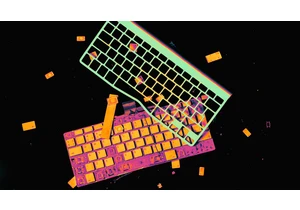
If you’ve followed Apple for any length of time, you’ve no doubt come across the notion that the company doesn’t rush into adopting cutting-
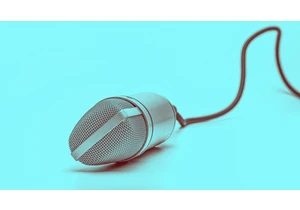
Every now and then, you run into a tool that truly wows you.
It’s rare—especially nowadays, when everyone and their cousin is coming out with overhyped AI-centric codswallop tha
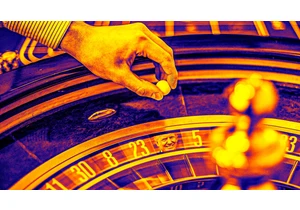
Tesla released its quarterly earnings report on Tuesday, its first since the company’s chief executive, Elon Musk, took up residence in the Trump White House and immediately began trying to fire f
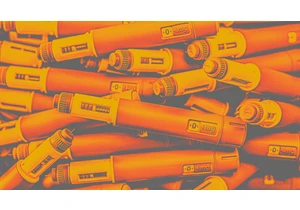
There’s never a dull day in the world of weight-loss medication. This week brought new restrictions on compounded GLP-1 medication, the cheaper, copycat versions of brand-name drugs that tel

In December 2023, I wrote an article exploring Apple CEO Tim Cook’s most likely successors, because t
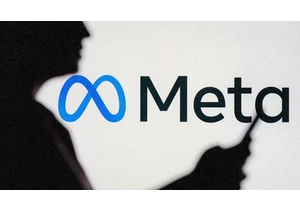
“Meta profits, kids pay the price,” was the message delivered by dozens of grieving families at the doors of Meta’s Manhattan office on Thursday.
Forty-five families traveled from

The world’s auto industry is getting a shake-up from Chinese automakers that
